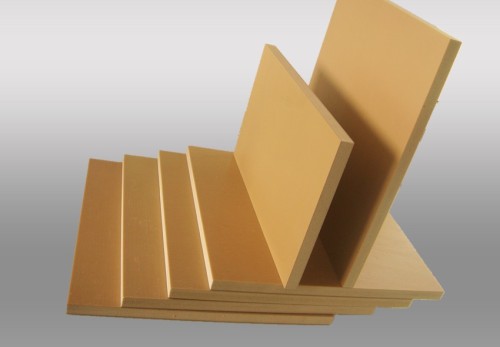 Wood-plastic composite (WPC) is a new type of composite material that has flourished at home and abroad in recent years. It refers to the use of polyethylene, polypropylene, and polyvinyl chloride, instead of the usual resin adhesives, and more than 50% of wood flour, rice husks. , straw and other waste plant fibers mixed into a new wooden material, and then by extrusion, molding, injection molding and other plastic processing technology, the production of the sheet or profile. Mainly used in building materials, furniture, logistics and packaging industries. The plastic and wood flour mixed in a certain proportion after the hot extrusion of the sheet, called extrusion wood-plastic composite sheet.
Wood-plastic composite (WPC) is a new type of composite material that has flourished at home and abroad in recent years. It refers to the use of polyethylene, polypropylene, and polyvinyl chloride, instead of the usual resin adhesives, and more than 50% of wood flour, rice husks. , straw and other waste plant fibers mixed into a new wooden material, and then by extrusion, molding, injection molding and other plastic processing technology, the production of the sheet or profile. Mainly used in building materials, furniture, logistics and packaging industries. The plastic and wood flour mixed in a certain proportion after the hot extrusion of the sheet, called extrusion wood-plastic composite sheet. At present, the application of wood-plastic composite materials in our country is not universal enough compared to foreign countries. With the growing demand for environmental protection in the world, wood-plastic composites, which are environmentally friendly materials, are becoming more and more popular, and the research and application of this material is becoming more and more mature. Wood-plastic composite materials of two major types: wheat straw, plastic (PP). Both of these raw materials are discarded materials, the roots of wheat straw crops, and PP will bring environmental pollution. China's agricultural land is widely distributed, and the handling of wheat straw every year is a huge problem. In many places, wheat straw is burned every time it is busy, which not only pollutes the environment but also wastes resources. Therefore, judging from the situation in China, the amount of wheat straw and waste plastic is very large, which lays a foundation for the new development of wood-plastic materials.
The processing of wood-plastic composites is relatively simple and not complicated. The general process is to grind the wheat straw into powder and plastic for molding. The appearance of wood-plastic composites is not much different from that of wood, and its performance is much better than that of some pure wood boards. Has the following advantages:
1, good processing performance. Wood-plastic composite materials contain plastics and fibers. Therefore, they have the same processing performance as wood, which can be sawed, nailed, planed, and can be finished with woodworking tools. The nail holding force is obviously better than other synthetic materials. Mechanical properties are superior to wood materials. The nail holding power is generally 3 times that of wood and 5 times that of particle board.
2, good strength properties. Wood-plastic composites contain plastics and therefore have a good elastic modulus. In addition, since the contained fibers are sufficiently mixed with the plastic, they have physical and mechanical properties such as compression resistance and bending resistance comparable to that of hardwood, and their durability is significantly better than that of common wood materials. The surface hardness is high, usually 2 to 5 times that of wood.
3, with water resistance, corrosion resistance, long service life. Compared with wood, wood-plastic materials and their products are resistant to strong acids, alkalis, water, and corrosion, and do not breed bacteria, and are not susceptible to insects or fungi. Long service life, up to 50 years.
4, excellent adjustable performance. Through additives, plastics can undergo polymerization, foaming, curing, modification and other changes, thus changing the density, strength and other characteristics of wood-plastic materials, and can also achieve special requirements such as anti-aging, anti-static, and flame retardant.
5, with UV light stability, good coloring.
6, its greatest advantage is turning waste into treasure, and 100% recycling and reproduction. Can be decomposed without causing "white pollution" and is truly a green product.
7, a wide range of raw materials. The plastic raw materials for the production of wood-plastic composites are mainly high-density polyethylene or polypropylene, and the wood fibers can be wood flour, wheat bran or wood fiber, and also require a small amount of additives and other processing aids.
8, according to the needs, made of any shape and size.
Wood-plastic composite materials have been applied to outdoor lawn ridges, swimming pool edgings, open-air corridors, etc., and as the research progresses, the wood-plastic composite materials are modified so that they can be better applied to more occasions. Such as wood-plastic flooring, wood-plastic interior wall panels, wood-plastic door series.
Therefore, the development and application of wood-plastic composite materials that are constantly calling for environmental protection and energy conservation must have strong vitality and prospects.
Touch Kitchen Faucets,Touch Kitchen Faucets Price,Touch Kitchen Faucets Product
Yuyao Zelin Sanitary Ware Co., Ltd , https://www.yyzelinfaucet.com